Imagine peering into a tiny glass world where lush greenery thrives in a confined space. You can create this magic with small terrariums, perfect for beginners seeking easy, fun projects. These mini ecosystems, enclosed environments for plants, fit anywhere—think a 6-inch glass jar or a 4-ounce mason jar. Let’s explore 10 practical ideas to build your own, starting with simple containers. Stick around to uncover each unique design!
Contents
Classic Glass Jar Terrarium
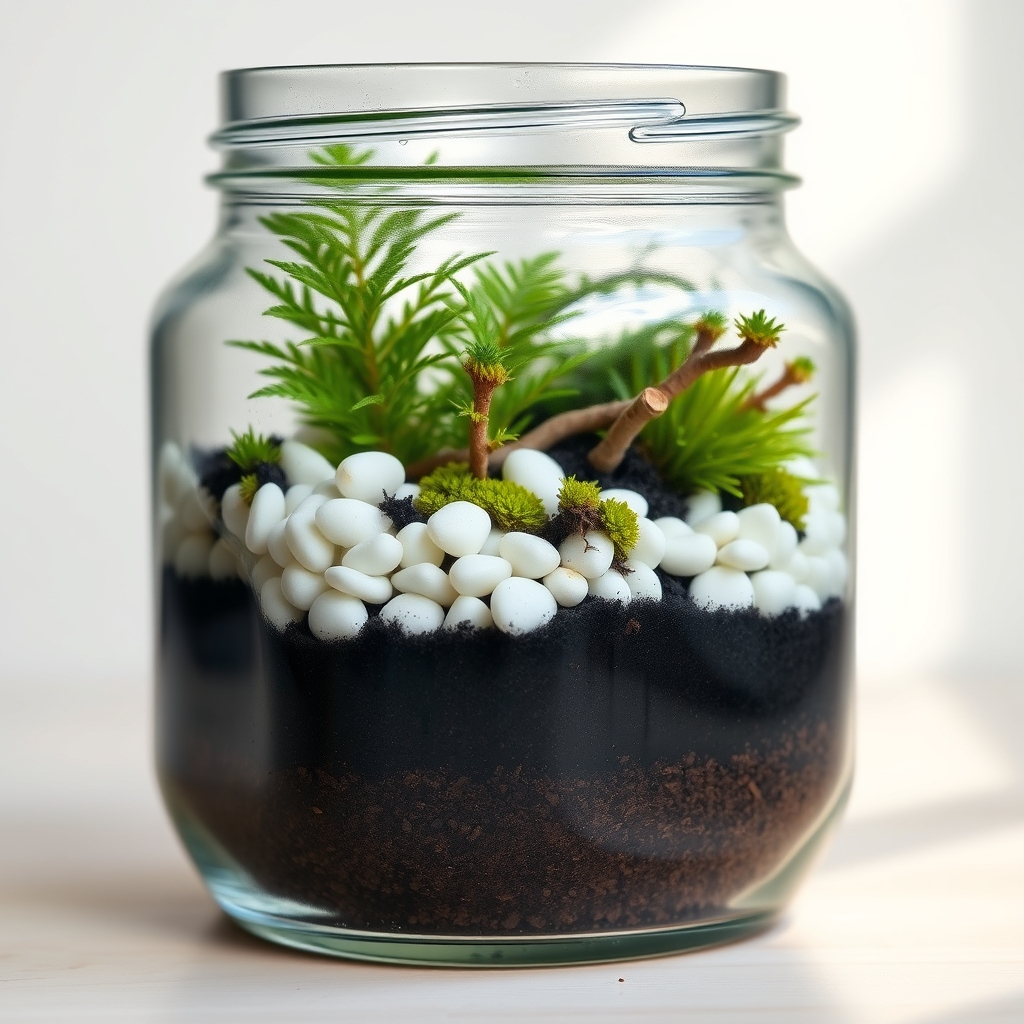
A classic glass jar terrarium is an excellent starting point for beginners due to its simplicity and accessibility. Using a clear glass jar with a lid, such as a mason jar or a repurposed food container, you can create a miniature ecosystem that thrives with minimal maintenance. These jars are easy to find, affordable, and provide a perfect view of the tiny world you’re building inside.
To set up a classic glass jar terrarium, start with a layer of pebbles or small rocks at the bottom for drainage, followed by a thin layer of activated charcoal to prevent mold and odors. Add a layer of potting soil suitable for the plants you choose, such as small ferns, moss, or air plants, which thrive in the humid environment a closed jar creates. Plant your selections carefully, leaving space for growth, and decorate with small figurines or natural elements like twigs for a personalized touch.
This type of terrarium is ideal for those new to the hobby because it requires little space and can be placed on a desk, shelf, or windowsill with indirect sunlight. The enclosed environment helps maintain humidity, reducing the need for frequent watering. With just a little care, a glass jar terrarium can become a charming, low-maintenance piece of living art in your home.
Mini Mason Jar Forest
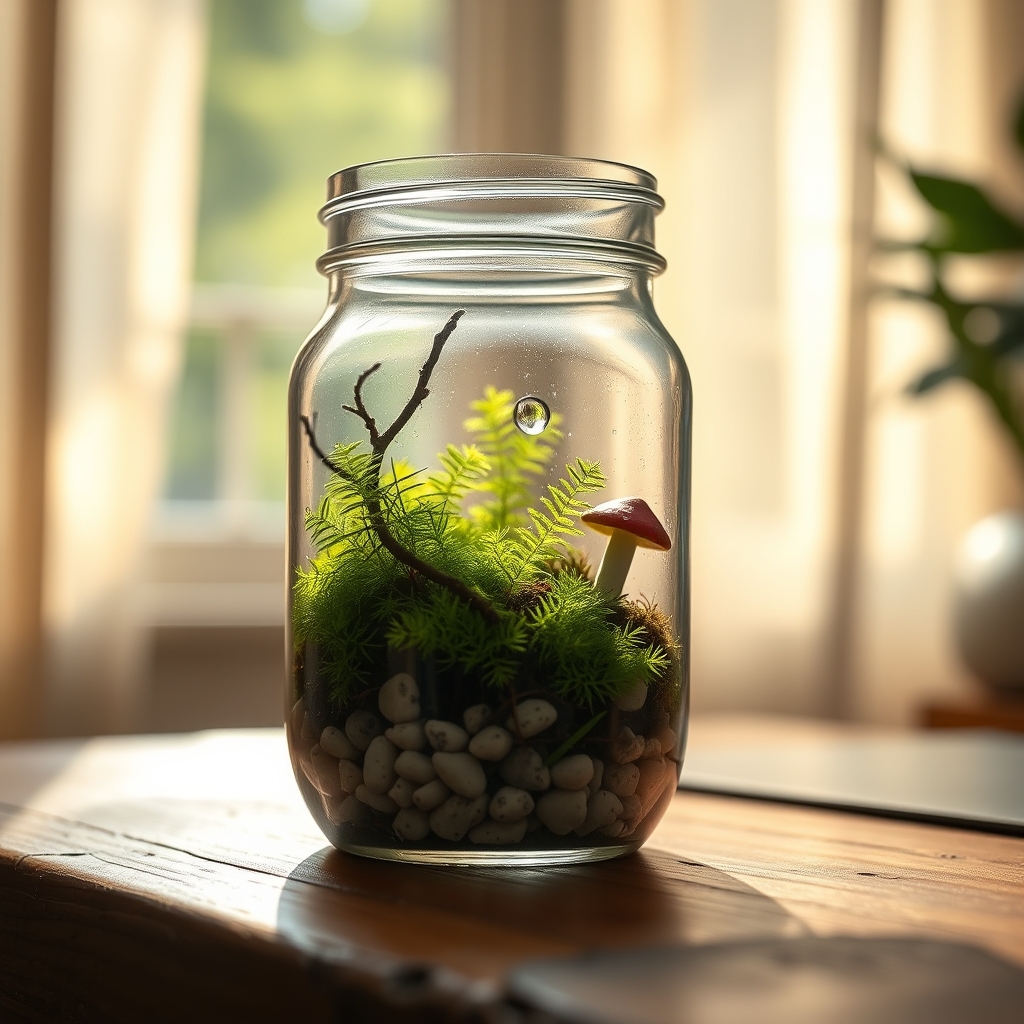
Creating a mini mason jar forest is a delightful and simple way for beginners to start their terrarium journey. Using a small mason jar, you can craft a tiny, self-contained ecosystem that mimics a lush forest environment. This project is perfect for those with limited space, as it fits easily on a desk, shelf, or windowsill, bringing a touch of nature indoors.
To build your mini mason jar forest, start with a clean, dry jar and add a layer of small pebbles or gravel at the bottom for drainage. Next, add a thin layer of activated charcoal to keep the environment fresh by preventing mold and bacteria growth. Then, layer in some potting soil and plant small, humidity-loving plants like moss, ferns, or air plants. Decorate with tiny figurines, rocks, or twigs to enhance the forest aesthetic, and seal the jar with its lid to maintain moisture.
This type of terrarium requires minimal maintenance, as the sealed environment recycles water through condensation. Place it in indirect sunlight to avoid overheating, and occasionally open the lid to allow fresh air circulation if the glass fogs up excessively. A mini mason jar forest is not only a charming decor piece but also a great way to learn the basics of terrarium care.
Teacup Tropical Escape
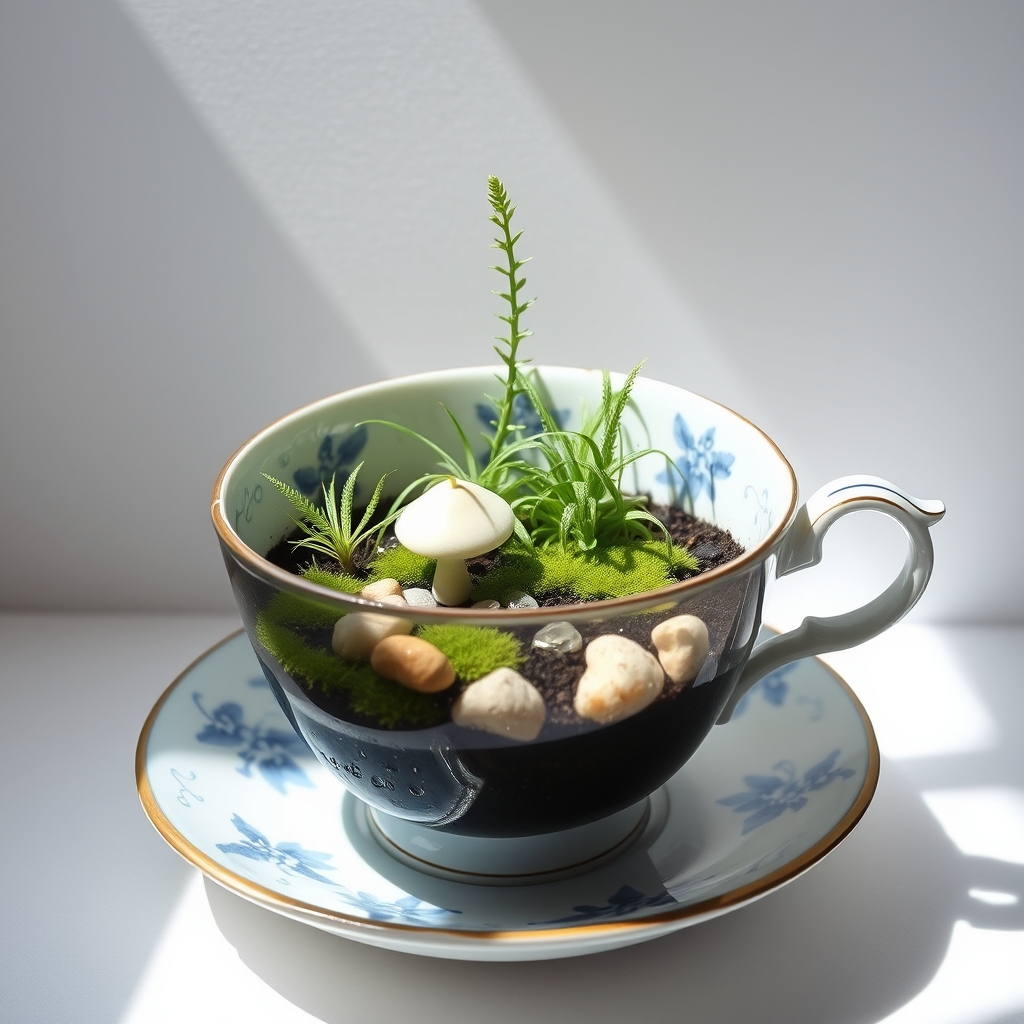
A Teacup Tropical Escape is a charming and creative way to bring a miniature jungle into your home using a simple teacup as the container for your terrarium. This small-scale project is perfect for beginners, as it requires minimal materials and space while offering a delightful tropical aesthetic. The teacup serves as a unique vessel that adds a whimsical touch to your decor, making it an ideal centerpiece or desk accessory.
To create this terrarium, start with a layer of small pebbles or gravel at the bottom of the teacup for drainage, followed by a thin layer of activated charcoal to keep the environment fresh. Add a layer of potting soil suitable for tropical plants, then plant tiny varieties like miniature ferns, air plants, or small-leafed ivy. Enhance the tropical vibe with decorative elements such as tiny figurines, moss, or colorful pebbles to mimic a lush island getaway.
Keep your Teacup Tropical Escape in a spot with indirect sunlight and mist it lightly every few days to maintain humidity, as tropical plants thrive in moist conditions. This low-maintenance terrarium is a fantastic way to experiment with plant care on a small scale, allowing beginners to build confidence before tackling larger projects.
Hanging Glass Orb Garden
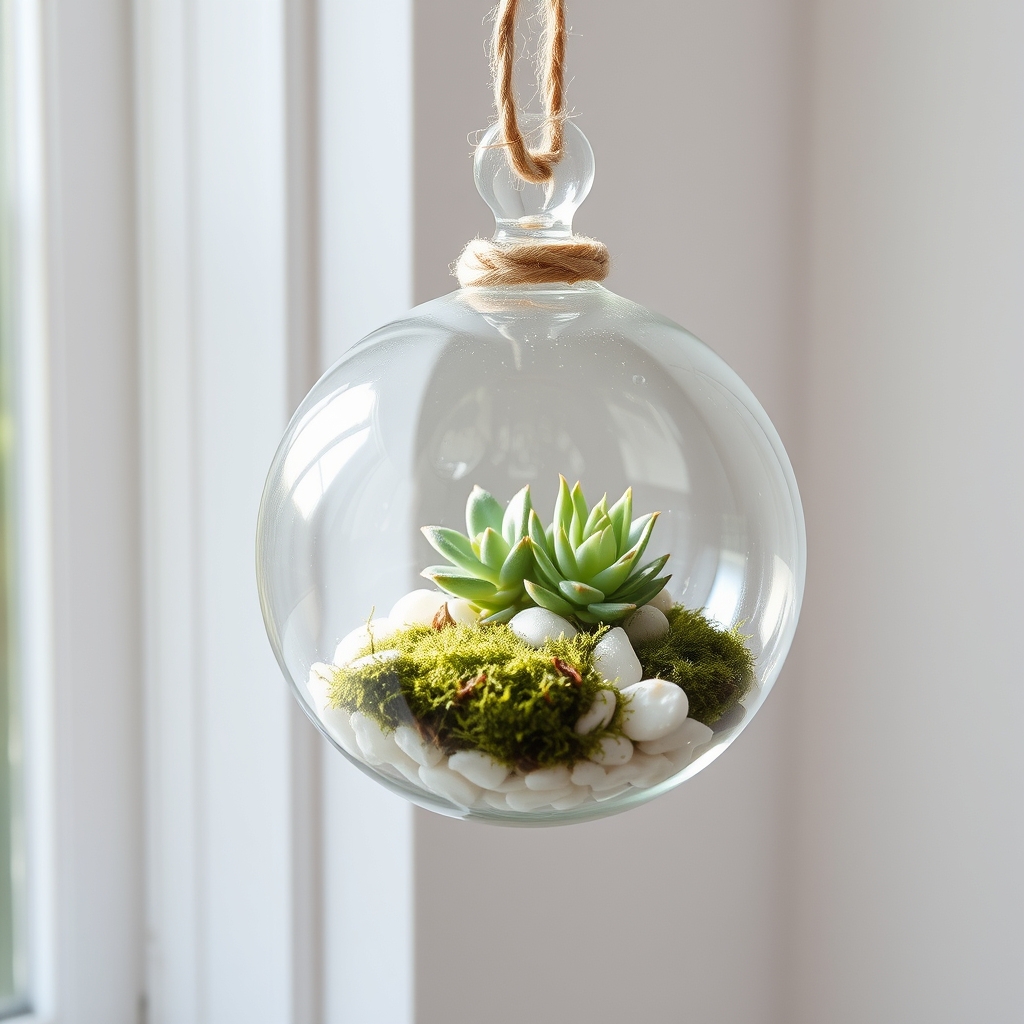
A hanging glass orb garden is a stunning and space-saving way to create a small terrarium, perfect for beginners looking to add a touch of greenery to their home. These orbs are typically made of clear glass, allowing you to showcase a miniature ecosystem suspended in midair. They can be hung from ceilings, window frames, or even outdoor patios, making them a versatile decor option that draws the eye and adds a modern, whimsical vibe to any space.
To create a hanging glass orb garden, start with a glass orb that has a small opening for planting. Choose low-maintenance plants like air plants, small succulents, or moss, as they thrive in confined spaces and require minimal care. Add a base layer of pebbles or gravel for drainage, followed by a thin layer of activated charcoal to keep the environment fresh, and then a layer of potting mix or sphagnum moss to support the plants. Hang the orb in a spot with indirect sunlight to guarantee the plants flourish without overheating inside the glass.
This type of terrarium is ideal for beginners because it’s easy to assemble and doesn’t demand frequent watering or complex maintenance. The transparent design also allows you to monitor the health of your plants easily. With just a little creativity, you can personalize your hanging glass orb garden by adding small decorative elements like tiny figurines or colored stones, turning it into a unique piece of living art.
Tiny Fishbowl Jungle
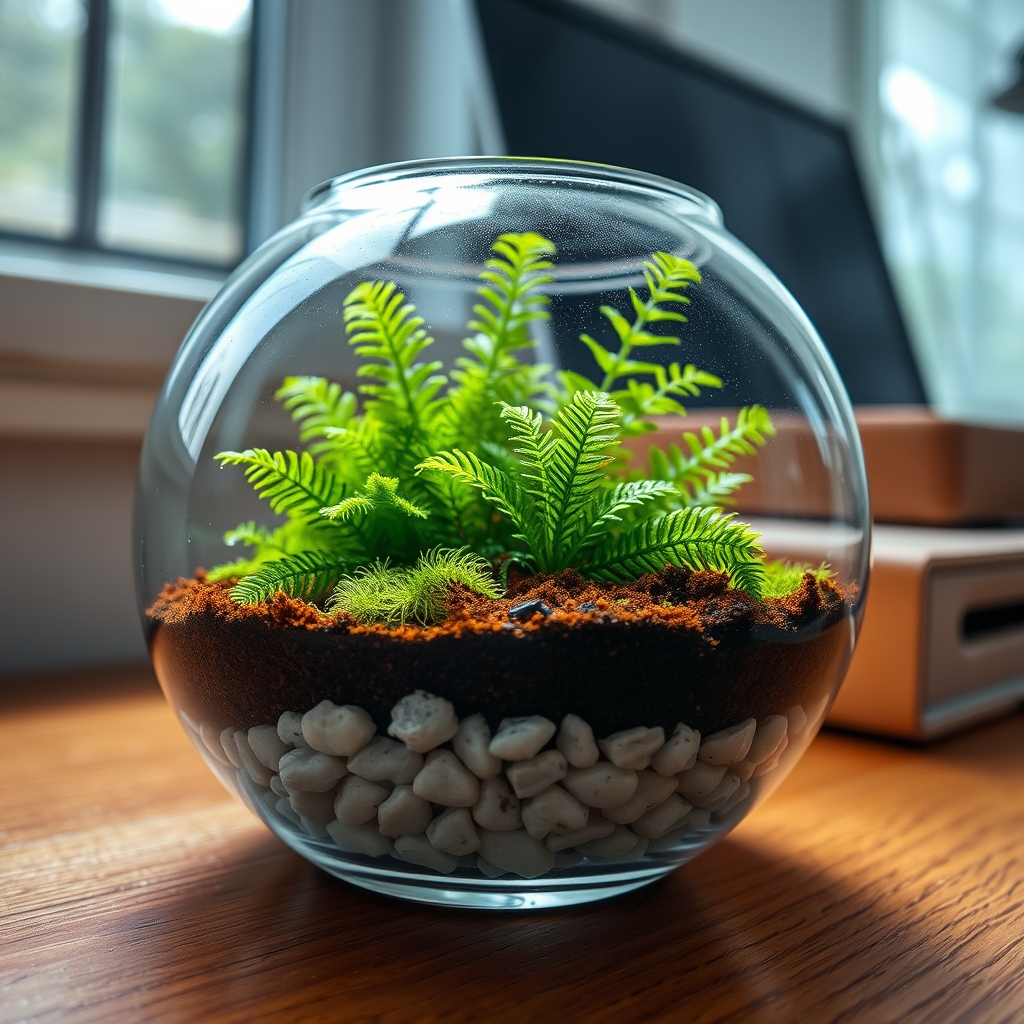
A Tiny Fishbowl Jungle is a charming and accessible way for beginners to create a small terrarium using a simple glass fishbowl. This setup transforms an ordinary bowl into a miniature tropical ecosystem, perfect for small spaces like a desk or shelf. The clear glass allows for a full view of the lush greenery inside, making it an eye-catching decor piece that requires minimal maintenance.
To create a Tiny Fishbowl Jungle, start with a layer of pebbles or gravel at the bottom for drainage, followed by a thin layer of activated charcoal to keep the environment fresh. Add a layer of potting soil, then plant small tropical plants like ferns, mosses, or mini orchids that thrive in humid conditions. The enclosed nature of the fishbowl helps retain moisture, mimicking a jungle environment, though occasional watering and indirect sunlight are still necessary to keep the plants healthy.
This type of terrarium is ideal for beginners due to its simplicity and affordability. You can personalize it with tiny figurines or decorative rocks to enhance the jungle theme. With just a little care, a Tiny Fishbowl Jungle can bring a touch of nature indoors, offering a calming and creative outlet for anyone new to terrarium gardening.
Vintage Bottle Oasis
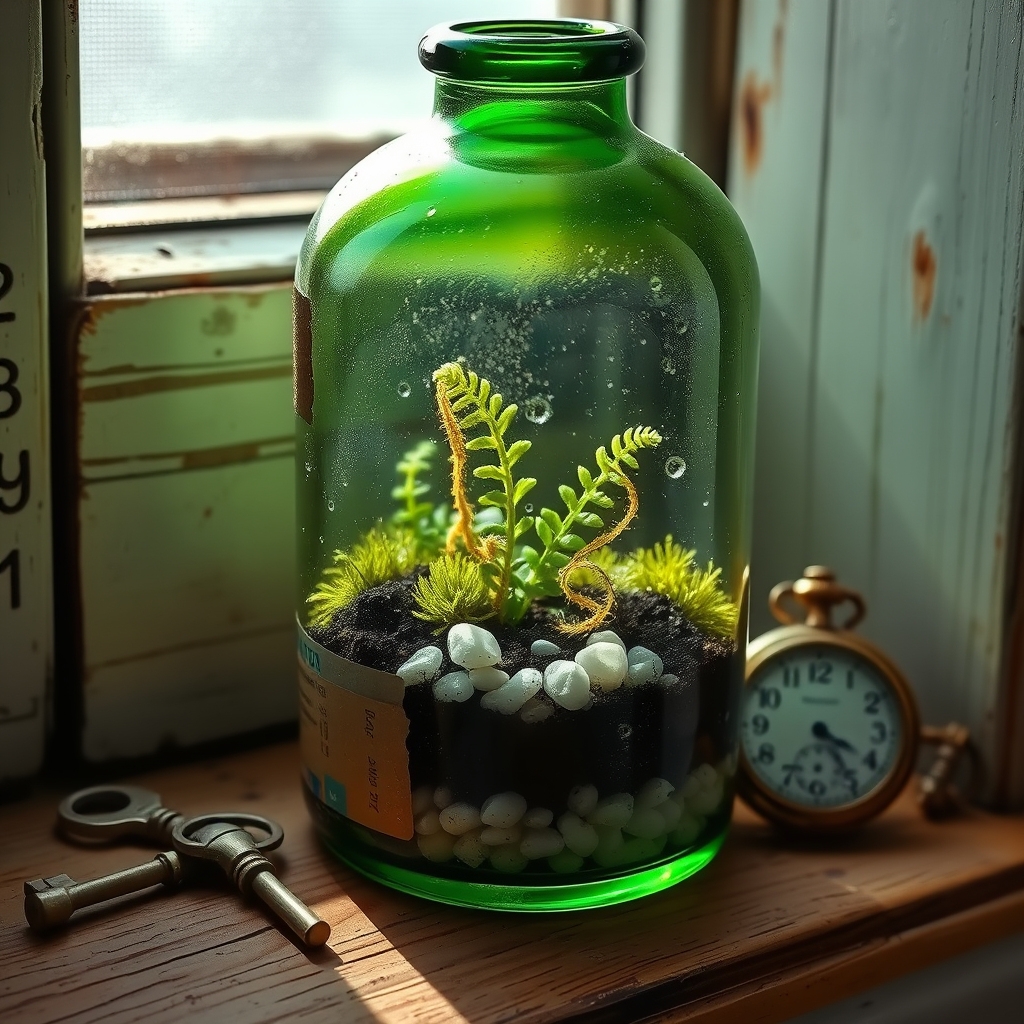
Creating a vintage bottle oasis is a charming and creative way to build a small terrarium, perfect for beginners looking to add a touch of nostalgia to their space. This idea involves repurposing old glass bottles, such as antique medicine bottles, vintage soda bottles, or even mason jars with a weathered look, to house a miniature ecosystem. The unique shapes and tinted glass of these containers add character and a whimsical aesthetic to your terrarium, making it a standout piece in any room.
To start, select a bottle with a wide enough opening to allow for easy planting and maintenance, or opt for one with a narrow neck if you’re comfortable using tools like tweezers or chopsticks to arrange your plants. Add a base layer of small pebbles or gravel for drainage, followed by a thin layer of activated charcoal to keep the environment fresh. Then, add a layer of potting soil suitable for your chosen plants—succulents, air plants, or small ferns work well in these confined spaces. Carefully place your plants inside, making sure they have enough room to grow, and decorate with tiny figurines, moss, or polished stones for a personalized touch.
This vintage bottle oasis not only recycles old glassware but also creates a low-maintenance green space that can thrive on a windowsill or shelf. Water sparingly, as the enclosed environment retains moisture, and make sure the terrarium gets indirect sunlight to prevent overheating. With minimal care, your vintage bottle terrarium will become a delightful focal point, blending history with nature in a small, sustainable way.
Small Wooden Box Habitat
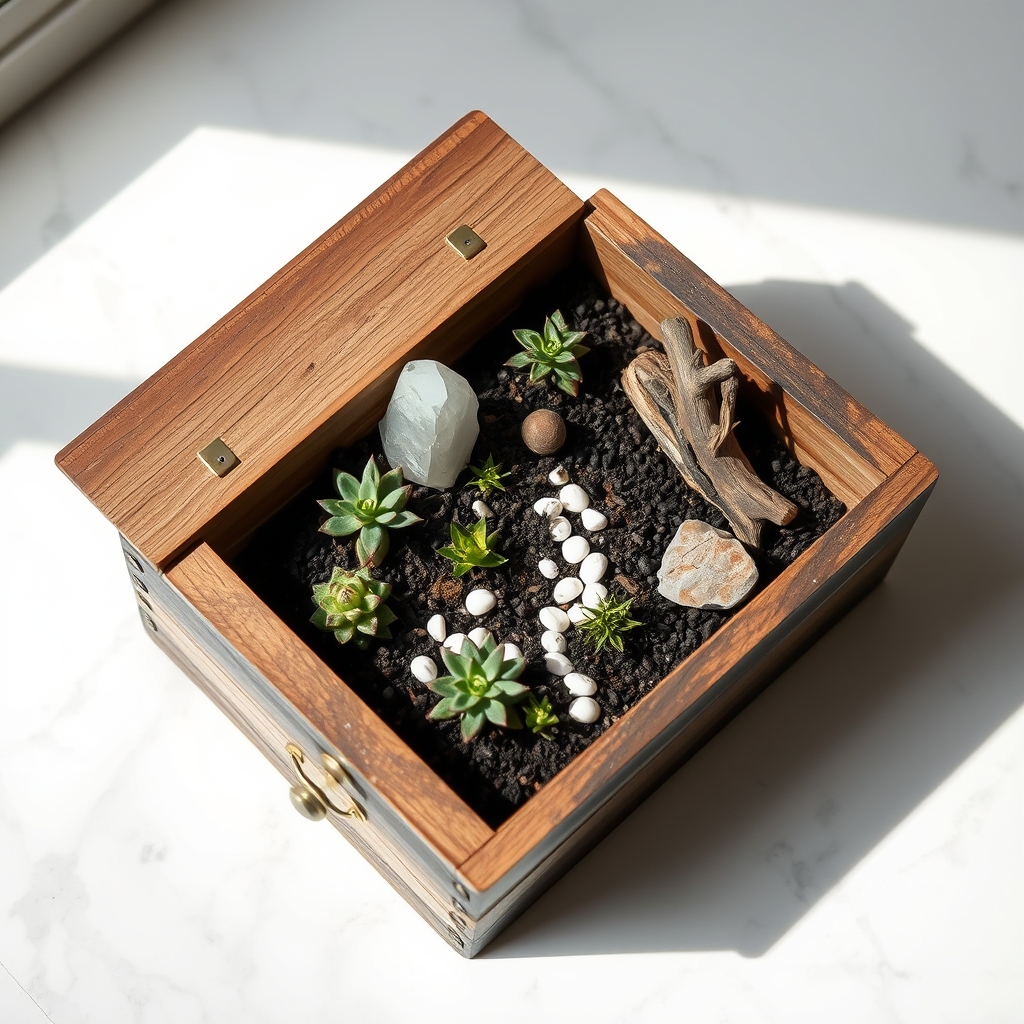
A small wooden box habitat is an excellent choice for beginners looking to create a unique and rustic terrarium. These boxes, often repurposed from old jewelry cases, cigar boxes, or craft store finds, provide a sturdy and enclosed environment that can house a variety of small plants and decorative elements. The wooden structure adds a natural, earthy aesthetic to the terrarium, making it a charming addition to any home or office space.
To set up a small wooden box habitat, start by lining the interior with a waterproof material, such as plastic sheeting or a glass insert, to prevent water damage to the wood. Add a layer of drainage material like pebbles or activated charcoal at the bottom, followed by a barrier layer of sphagnum moss to prevent soil from mixing with the drainage. Then, add a thin layer of potting soil suitable for your chosen plants—succulents, air plants, or small ferns work well in these confined spaces. Arrange the plants and decorate with small rocks, driftwood, or miniature figurines to create a personalized miniature landscape.
Ensure the wooden box has a lid or glass panel to maintain humidity, especially for tropical plants, but allow for occasional ventilation to prevent mold growth. Place the terrarium in indirect sunlight to avoid overheating, as the enclosed space can trap heat. With minimal maintenance, such as light watering and periodic trimming, a small wooden box habitat can thrive as a low-effort, visually appealing project for any beginner.
Geometric Glass Container Design
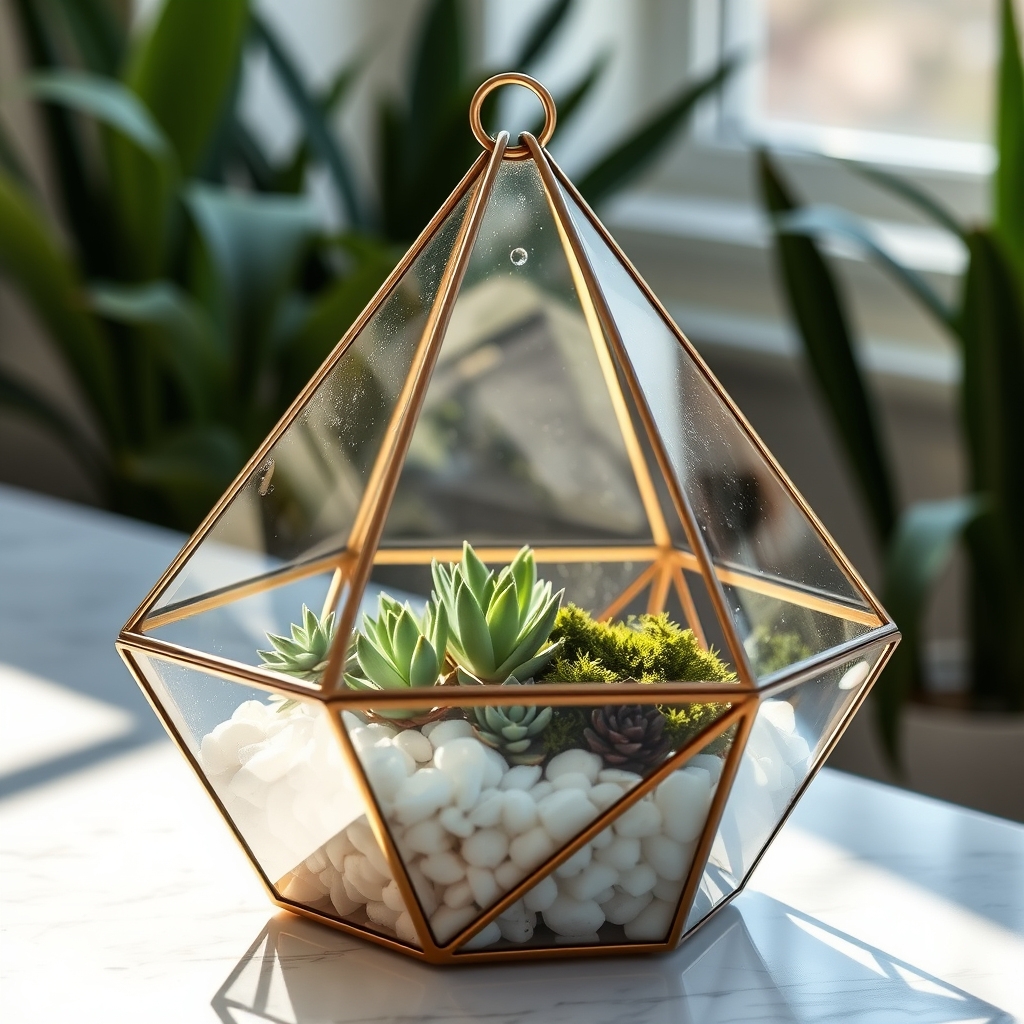
Geometric glass containers are a popular choice for small terrariums due to their modern aesthetic and versatile shapes. These containers, often made of clear glass with metal or wooden frames, come in various geometric forms like cubes, pyramids, or hexagons. Their structured design not only adds a stylish element to your space but also provides a clear view of the miniature ecosystem inside, making them ideal for beginners who want an eye-catching display.
These containers typically have a lid or an open side for easy access, allowing you to arrange plants, moss, rocks, and figurines with ease. The defined angles and edges of geometric designs help create a sense of order, which can guide beginners in organizing their terrarium layout. Additionally, their compact size makes them perfect for small spaces like desks, shelves, or windowsills.
When choosing a geometric glass container, consider the type of plants you want to grow, as some shapes may offer more depth or height for root systems. Make sure the container has adequate ventilation if you’re creating a closed terrarium to prevent mold growth. With their sleek look and practical design, geometric glass containers are an excellent starting point for anyone new to terrarium building.
Repurposed Light Bulb Ecosystem
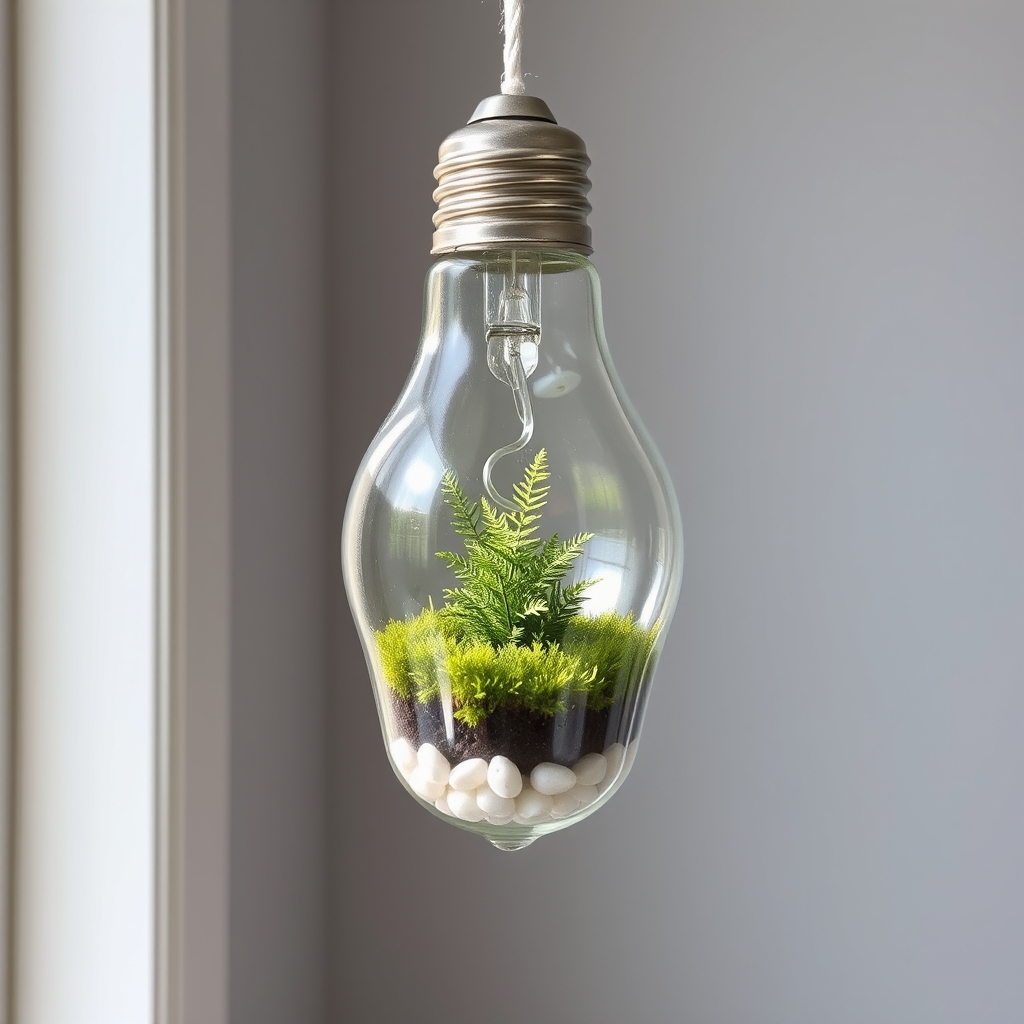
Creating a repurposed light bulb ecosystem is a unique and creative way to build a small terrarium, perfect for beginners looking to experiment with miniature gardening. This idea involves using an old, burnt-out incandescent light bulb as a tiny glass container for a self-sustaining ecosystem. By carefully hollowing out the bulb (ensuring safety by wearing gloves and protective eyewear), you can transform it into a delicate vessel for small plants like moss, air plants, or tiny ferns. The transparent glass allows for a full view of the miniature world inside, making it a striking decorative piece.
To start, remove the metal base and inner components of the bulb with pliers, creating an opening at the top. Add a layer of small pebbles or sand for drainage, followed by a thin layer of activated charcoal to keep the environment fresh, and then a layer of potting soil or sphagnum moss. Plant your chosen greenery using tweezers for precision, and add tiny decorations like figurines or rocks for a whimsical touch. Seal the ecosystem by keeping it in a humid environment or lightly misting it occasionally, as the enclosed space helps retain moisture.
This project is not only a fun DIY activity but also an eco-friendly way to repurpose household items. Hang the light bulb terrarium with string or place it on a small stand to display in a well-lit area, avoiding direct sunlight to prevent overheating. With minimal care, this tiny ecosystem can thrive, offering a charming glimpse into the world of terrarium gardening.
Petite Apothecary Jar Scene
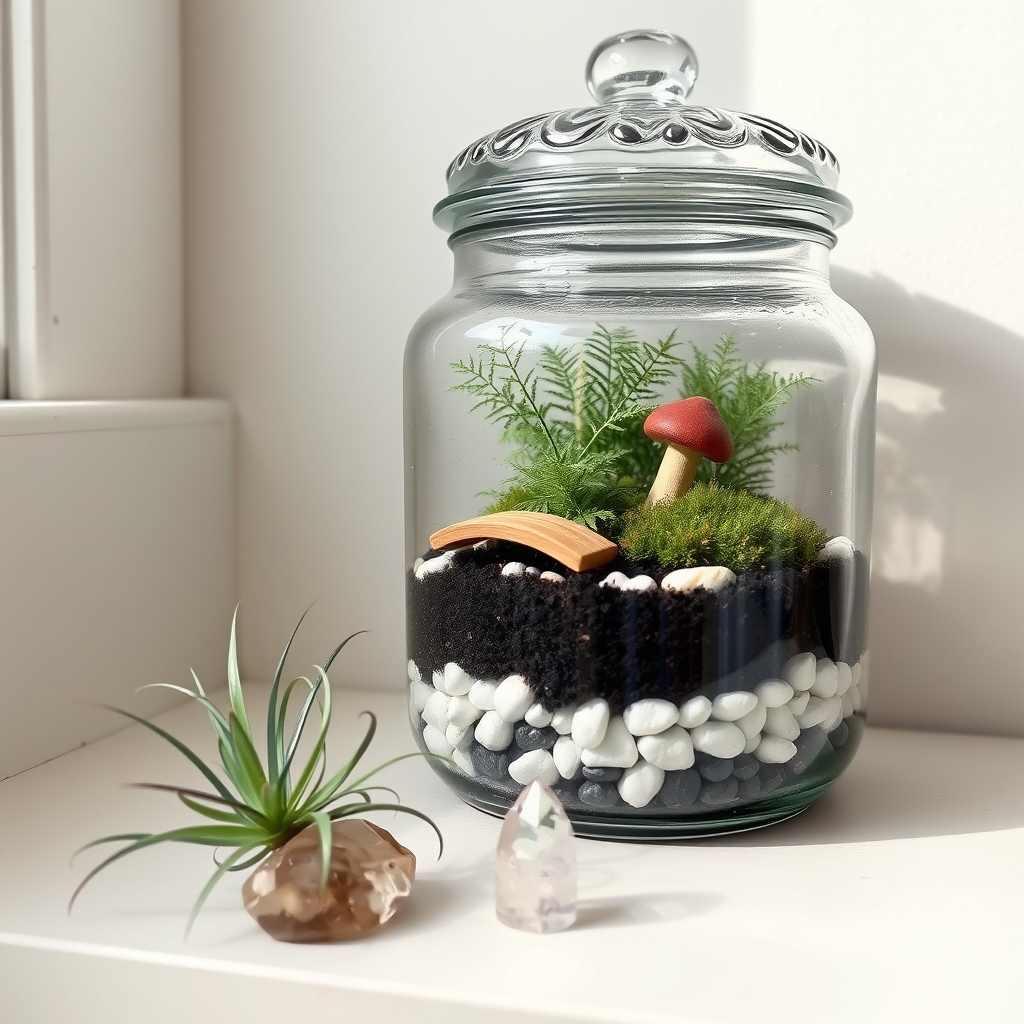
The Petite Apothecary Jar Scene is a charming and accessible small terrarium idea perfect for beginners. Using a glass apothecary jar, which often comes with a lid, you can create a miniature ecosystem that mimics a natural landscape. These jars are typically small, making them ideal for limited spaces like a desk or shelf, and their clear glass design allows for a full view of the tiny world inside.
To build this terrarium, start with a layer of pebbles or gravel at the bottom for drainage, followed by a thin layer of activated charcoal to keep the environment fresh. Add a layer of potting soil, then arrange small plants like moss, air plants, or miniature ferns that thrive in humid conditions. Enhance the scene with tiny figurines, rocks, or driftwood to create a whimsical forest or garden theme. The lid helps maintain humidity, making it a low-maintenance option for those new to terrarium care.
This setup not only serves as a beautiful decorative piece but also offers a simple way to experiment with terrarium building. Apothecary jars are widely available at craft stores or online, and their compact size means you can easily try different designs without committing to a large project. It’s a delightful way to bring a bit of nature indoors with minimal effort.
